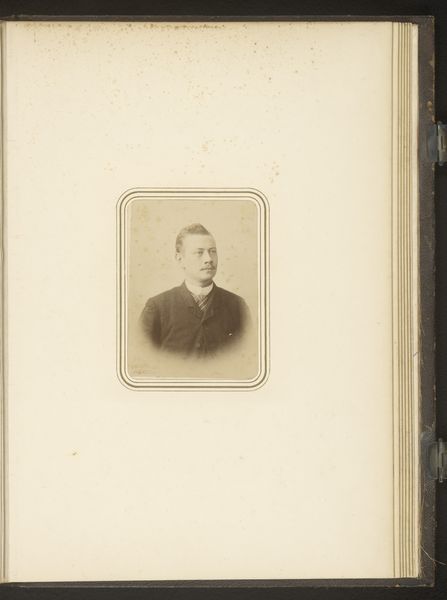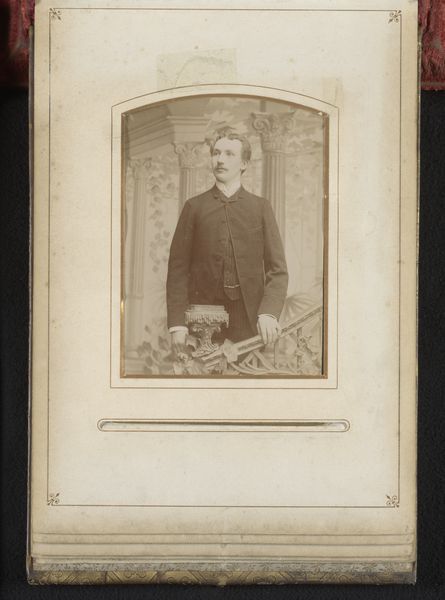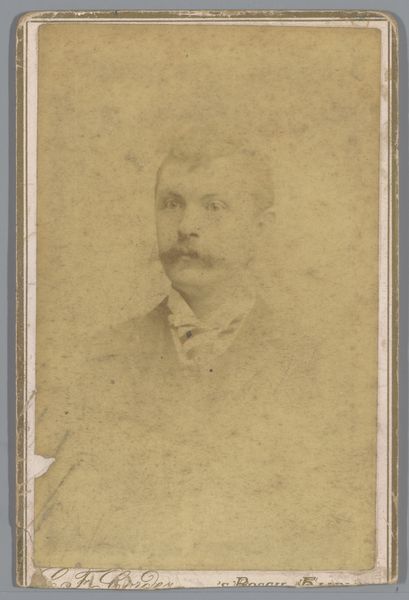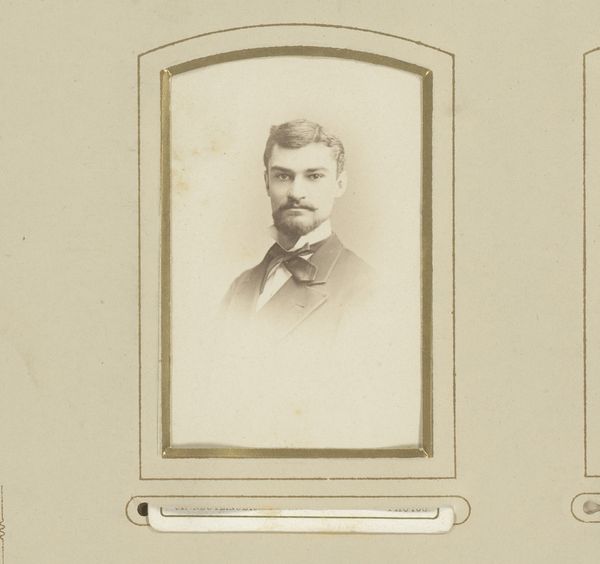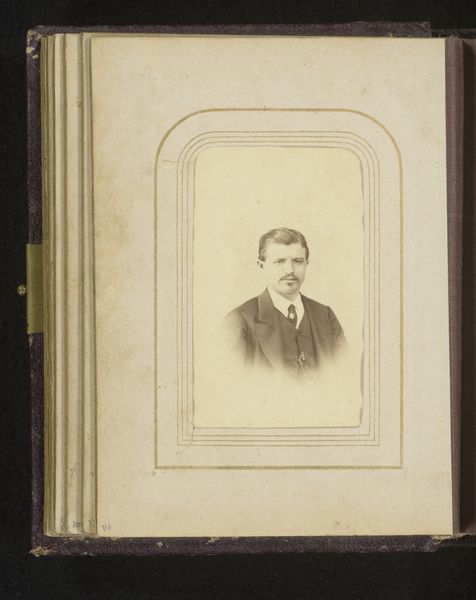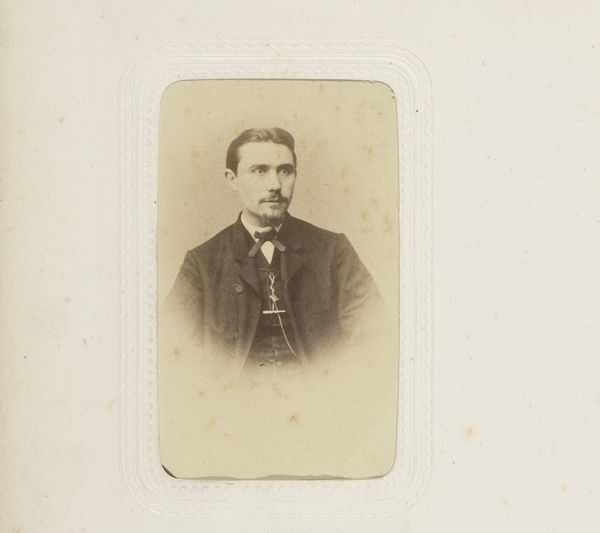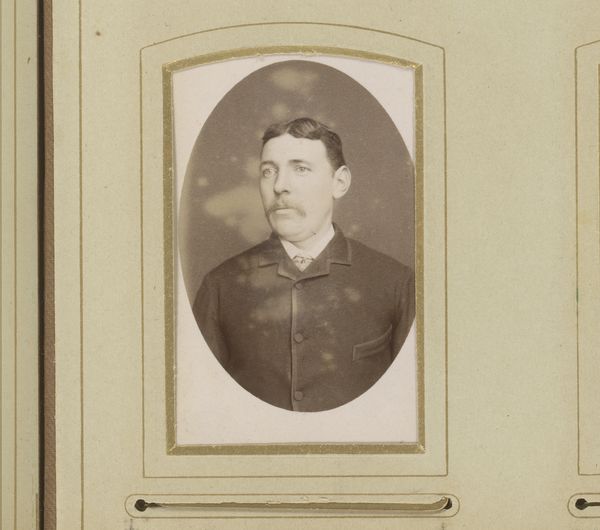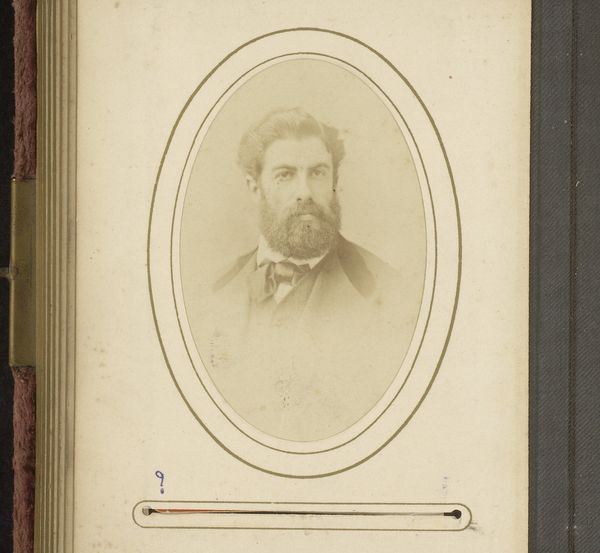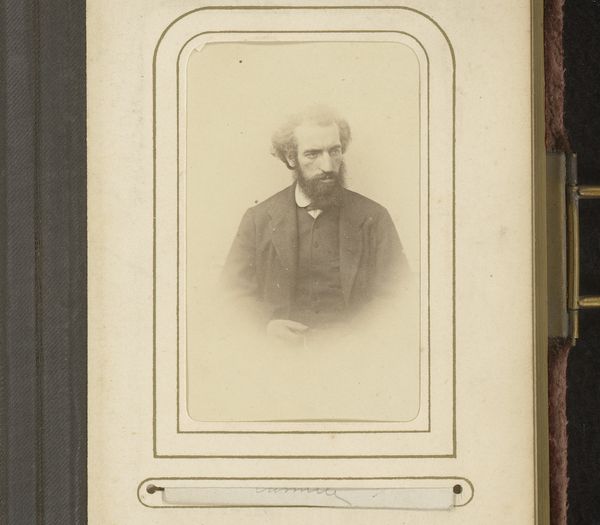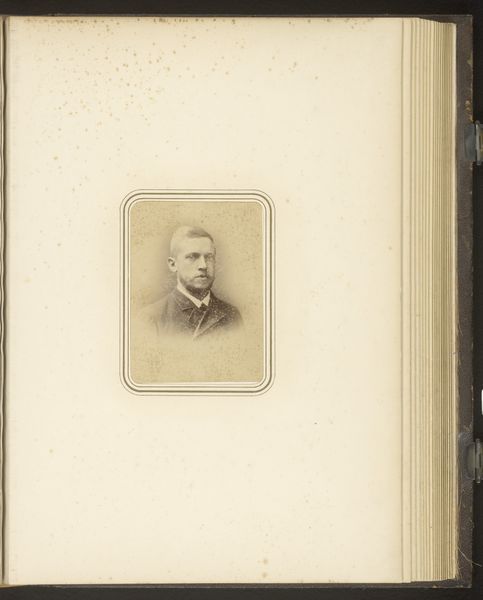
photography, albumen-print
#
portrait
#
photography
#
19th century
#
albumen-print
#
realism
Dimensions: height 135 mm, width 95 mm
Copyright: Rijks Museum: Open Domain
Curator: This portrait just draws you in, doesn't it? Such directness. Editor: Absolutely. It has that starkness that often comes with early photography. It's as if the sitter knew the importance of leaving a record of their existence. This albumen print, dating from somewhere between 1861 and 1880, is titled "Portret van een man met baard," currently held in the Rijksmuseum collection. Curator: I'm immediately drawn to his expression. The gaze is intense but also slightly melancholic. What stories is he holding back? Editor: I see your point. There's a weight there, a gravitas. It speaks to the rise of the bourgeois class in Europe at that time and the desire for legitimacy, respectability, and remembrance in the face of massive cultural change. A physical and social ambition visualized here with photography. Curator: And that meticulously groomed beard. Facial hair became such a powerful symbol of masculinity and authority in the 19th century. Editor: Indeed, and let's not overlook the clothing; the jacket looks freshly made for a solemn representation that shows both wealth and dignity. It speaks to both class and aspirations, but on the other hand, realism was arising strongly as a movement during those years, and the photographic medium becomes an ideal channel for that intention. Curator: I wonder, though, how aware he was of all those implications? Did he feel burdened by them, or empowered? Editor: Perhaps a little of both. The image reflects not just his personal identity but also the aspirations and anxieties of a whole social class at a transformative point in history. Also, note the framing of the shot itself: this ovoid vignette on an off-white page. Do you consider that symbolic or mere decor? Curator: Everything counts. The shape is like looking into an intimate past, or a memento. Editor: Ultimately, what this portrait offers is a window into a specific moment in time—a collision of personal identity and historical forces. It prompts us to think about what traces we leave behind and how future generations will interpret them. Curator: Precisely, it's more than just an image of a man with a beard; it’s an enduring question. What remains when we’re gone?
Comments
No comments
Be the first to comment and join the conversation on the ultimate creative platform.
